We will help you master the basics of basketball. Learn how to play basketball for beginners by focusing on dribbling, shooting, passing, and defense. Practice ball control with crossovers, behind-the-back, and between-the-legs moves. Improve your shooting with layups, jump shots, and free throws.
Work on passing skills like chest, bounce, and overhead passes. Strengthen your defense with proper stance, lateral movement, and footwork. Build endurance and agility with conditioning exercises. Learn the rules, positions, and basic strategies.
Follow a structured training plan. Avoid common mistakes. Use the right gear. Watch professionals and play regularly. With practice, you will improve fast!
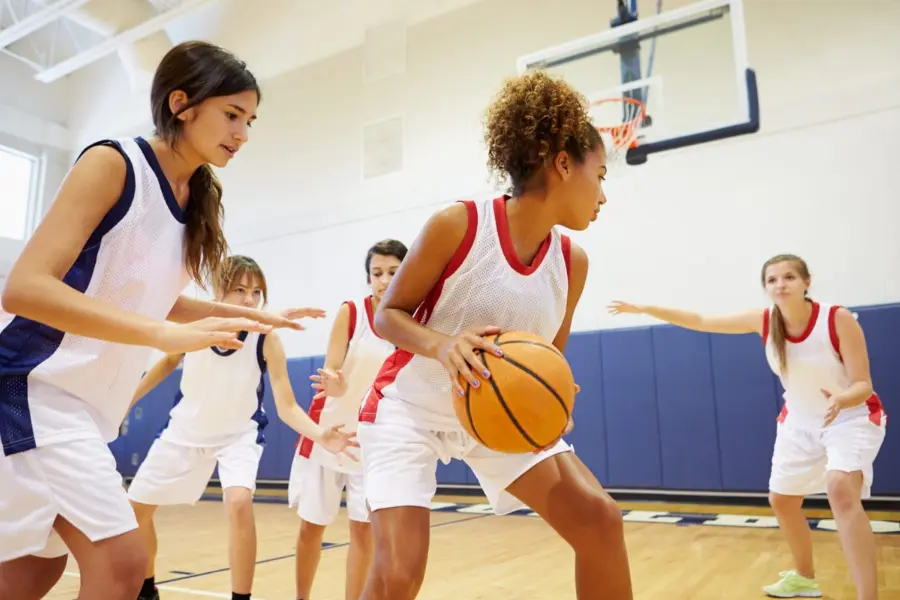
Understanding the Game: Rules & Court Layout
Grasping the fundamentals of basketball’s rules and court layout forms the foundation for any aspiring player’s journey into the sport. The rectangular court’s key features include two hoops, each positioned 10 feet (3.05 meters) high at opposite ends. You’ll notice a three-point line arcing around each basket, demarcating long-range shots from two-pointers. The restricted area, a semi-circular zone beneath the hoop, limits defensive positioning and prevents charging fouls.
A regulation NBA game consists of four 12-minute quarters, with the team accumulating the most points emerging victorious. Players earn two points for field goals inside the three-point arc, three for those beyond it, and one point for each successful free throw.
While in possession, players must dribble the ball while moving, as holding it and running results in a traveling violation. Double dribbling, or dribbling with both hands simultaneously or resuming dribbling after stopping, is also prohibited.
Fouls play an integral role in basketball strategy and gameplay. Personal fouls occur when there’s illegal physical contact between players, such as blocking, charging, or hand-checking. Depending on the situation, these infractions can result in free throws for the opposing team or side-out possessions. Team fouls accumulate, leading to bonus free throw situations.
Understanding these rules, violations, and the court’s layout will significantly enhance your gameplay, strategy, and basketball IQ as you develop your skills. Familiarity with concepts like ball possession, shot clock, backcourt violation, and offensive and defensive tactics will contribute to a more comprehensive grasp of the game’s nuances.
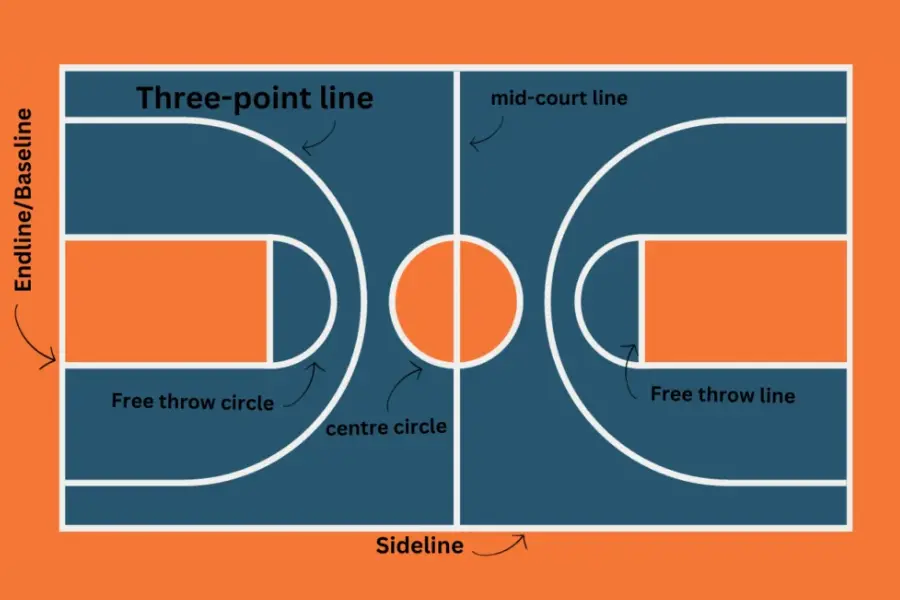
Essential Skills for Beginners
To excel in basketball, mastering several essential skills is crucial for beginners. Focus on developing proficient ball handling techniques to maintain control and enhance dribbling ability. Practice various shooting methods, including layups, jump shots, and free throws, to improve scoring efficiency.
Work on passing drills, such as chest passes, bounce passes, and overhead passes, to enhance team play and court vision. Develop defensive strategies, including proper stance, footwork, and anticipation, to become a formidable opponent on the court.
These fundamental basketball skills form the foundation of your athletic journey and will significantly improve your overall performance. Concentrate on hand-eye coordination, agility, and spatial awareness to complement your technical skills. Incorporate strength and conditioning exercises to build endurance and power, essential for sustaining high-level play throughout games.
Study offensive and defensive tactics, learning to read the court and make quick decisions. Familiarize yourself with basketball terminology, rules, and regulations to enhance your understanding of the game. Regular practice, both individually and with teammates, is vital for skill refinement and muscle memory development.
Ball Handling: Learn to Control the Ball
Ball handling, the cornerstone of every basketball player’s skill set, encompasses three essential elements: proper grip, dribbling techniques, and error correction. This fundamental aspect of the game is crucial for court control and offensive prowess.
To achieve optimal ball control, players must master the correct grip. Place your fingertips on the ball’s surface, spreading them comfortably across the pebbled texture. Your palm shouldn’t contact the ball, allowing for enhanced maneuverability and swift releases. Regular practice of this grip technique is vital for developing muscle memory and instinctive ball handling.
Dribbling mastery requires consistent practice of various drills, each targeting specific skills. The low dribble, a foundational technique, involves keeping the ball below waist level and close to your body. This stance provides superior control and reduces the risk of turnovers. Progress to more advanced maneuvers like the crossover, swiftly transitioning the ball between hands in front of your body. As proficiency improves, incorporate the behind-the-back dribble, seamlessly transferring the ball from one hand to the other behind your back.
Common dribbling errors include ball slapping, excessive dribble height, and focusing on the ball instead of the court. To rectify these issues, emphasize fingertip control, maintain a low dribble, and cultivate peripheral vision. Effective ball handling stems from repetition and muscle memory development. Dedicating time to these fundamentals will yield significant improvements in overall game performance.
Advanced ball handlers excel in various dribbling styles, including the hesitation dribble, in-and-out dribble, and between-the-legs dribble. These techniques, when executed proficiently, can create scoring opportunities and facilitate offensive plays. Additionally, mastering ball handling under pressure situations, such as full-court presses or tight man-to-man defense, is crucial for elevating one’s basketball prowess.
Incorporating ball handling drills into daily practice routines is essential for continuous improvement. Exercises like figure-eight dribbling, two-ball dribbling, and dribbling with resistance bands can enhance coordination, strength, and control. As players progress, they should challenge themselves with game-like scenarios, simulating defensive pressure and decision-making situations.
Ultimately, superior ball handling skills contribute to a player’s overall basketball IQ, court vision, and ability to create plays. By honing these fundamental techniques and continually pushing their limits, players can elevate their game and become more valuable assets to their teams.
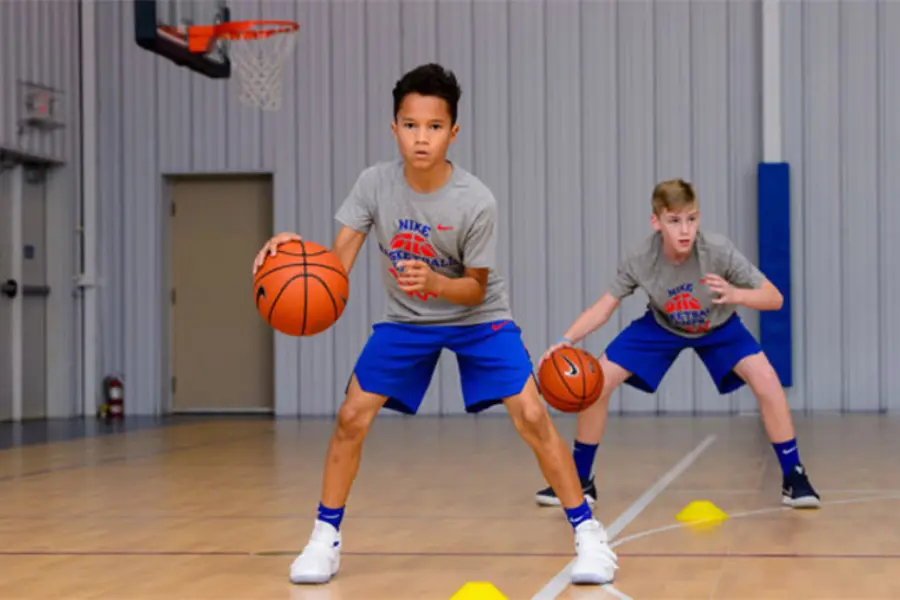
Shooting Techniques: How to Score Like a Pro
Mastering shooting techniques is crucial for any aspiring basketball player, as it’s the primary method to score points and contribute to your team’s success on the court. There are three fundamental shot types essential for every player’s arsenal: the jump shot, layup, and free throw.
For a proper jump shot, start with your feet shoulder-width apart, knees slightly bent in an athletic stance. Hold the ball with your dominant hand, fingers spread wide for control, while your non-shooting hand supports the side. As you elevate, extend your shooting arm upward, releasing the ball at the apex of your jump. Follow through by flicking your wrist, creating a backspin on the ball for improved accuracy and arc.
The layup, a close-range shot used when driving to the basket, requires finesse and timing. As you approach the hoop at speed, take two steps, leap off your outside foot, and use your inside hand to gently bank the ball off the backboard and into the hoop. This high-percentage shot is essential for guards and forwards alike.
Free throws are uncontested shots taken from the foul line, often deciding close games. Focus on consistent form: feet aligned with the basket, elbow under the ball, and a smooth release. Practice these shots regularly to improve your accuracy, muscle memory, and confidence under pressure.
To enhance your shooting prowess, incorporate diverse drills into your training regimen:
1. Spot shooting: Improve accuracy from various court positions
2. Form shooting: Perfect your technique through repetition
3. Partner passing: Develop catch-and-shoot skills
4. Off-the-dribble shooting: Simulate game-like scenarios
5. Free throw routines: Build consistency and mental toughness
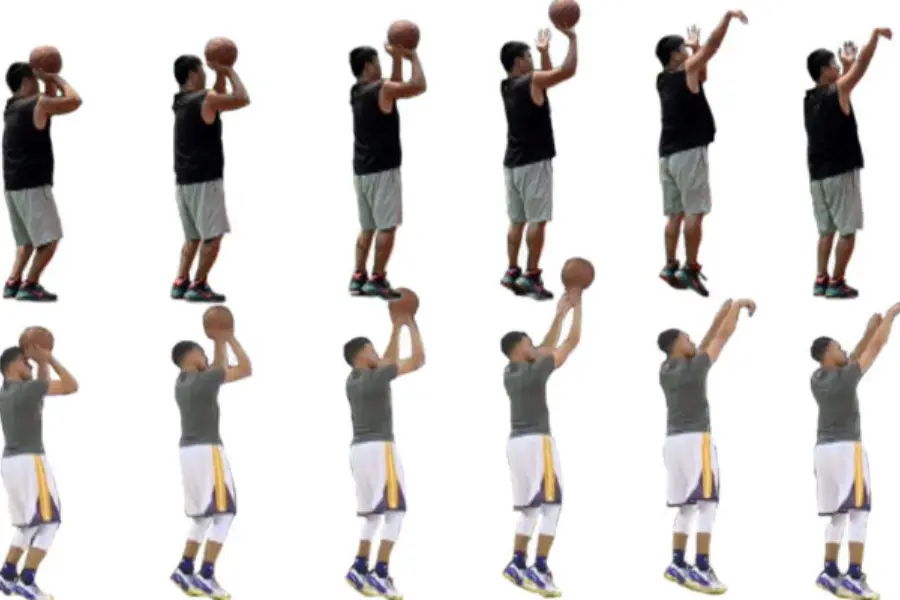
Passing Drills: Master the Art of Team Play
As you advance in your basketball career, honing exceptional passing skills becomes crucial for effective team dynamics and creating high-percentage scoring opportunities. To excel in the art of passing, focus on mastering three fundamental techniques: the chest pass, bounce pass, and overhead pass.
The chest pass serves as the cornerstone for quick, direct passes to teammates. Execute this pass by holding the basketball at chest level and propelling it forward with both hands while stepping towards your intended target. The bounce pass, an invaluable tool for circumventing defenders, requires precise aim to bounce the ball approximately two-thirds of the distance to your teammate, ensuring it reaches them at waist height. For long-range passes or when passing over defenders, employ the overhead pass by elevating the ball above your head and releasing it with both hands, using your fingertips to guide its trajectory.
To enhance your passing proficiency, practice these techniques in game-like scenarios. Implement drills that simulate real-game situations, such as passing while in motion, under defensive pressure, or to a cutting teammate. Remember, accurate and well-timed passes are essential for maintaining ball possession and generating high-quality scoring chances.
Key passing drill concepts:
1. Ball movement
2. Court vision
3. Spatial awareness
4. Decision-making
5. Timing and rhythm
As you refine your passing skills, incorporate these advanced techniques:
– No-look passes
– Behind-the-back passes
– Alley-oop passes
– Skip passes
– Outlet passes
Emphasize the following aspects during practice:
– Reading defensive positioning
– Anticipating teammate movement
– Maintaining proper form and balance
– Developing ambidexterity in passing
– Communicating effectively with teammates
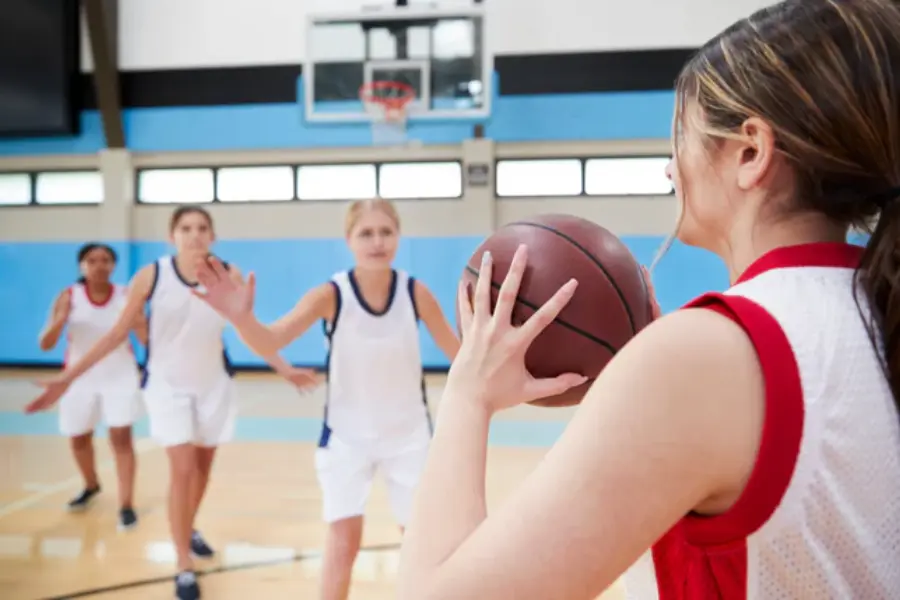
Defense Strategies: How to Be a Solid Defender
While offensive skills are crucial, mastering defensive techniques is equally vital for comprehensive basketball proficiency. To become an elite defender, one must hone fundamental skills including proper stance, efficient movement, and legal ball-interception methods.
Begin with the quintessential defensive posture: feet shoulder-width apart, knees flexed, weight distributed on the balls of your feet, and arms outstretched. This stance facilitates rapid lateral mobility and equilibrium. Practice side-to-side sliding while maintaining this low position to effectively shadow your opponent.
When marking an adversary, focus your gaze on their core rather than the ball. This strategy aids in anticipating directional changes. Utilize your hands to disrupt passing lanes and apply pressure without initiating contact, adhering to the principles of man-to-man defense.
For legal ball acquisition, timing is paramount. Attempt to strip the ball when the dribbler exposes it, but avoid reaching in or bodily contact to prevent fouls. When contesting shots, leap vertically with arms extended, synchronizing your jump to intercept the ball at its apex, exemplifying the art of shot-blocking.
In zone defense scenarios, communication is imperative. Vocalize screens and switches, and be prepared to provide help-side defense when teammates require assistance. Maintain constant awareness of your designated area and nearby offensive players, adjusting your positioning as the offense maneuvers.
To enhance defensive prowess, incorporate drills focusing on footwork, such as the defensive slide and close-out exercises. Develop basketball IQ by studying offensive patterns and tendencies, enabling you to anticipate plays and make timely defensive rotations.

Developing Game Sense: Play Smart, Not Just Hard
Developing game sense is crucial for basketball novices aspiring to elevate their performance beyond mere physical prowess. To play intelligently, mastering the art of court awareness and split-second decision-making is essential. This encompasses anticipating opponents’ strategies, discerning patterns in their gameplay, and adapting tactics accordingly.
A fundamental aspect of basketball IQ is off-ball movement. Since players aren’t always in possession, it’s vital to hone skills in creating space and facilitating optimal passing opportunities. Practicing cutting, screening, and strategic court positioning not only enhances personal scoring chances but also generates openings for teammates.
Comprehending player positions and team dynamics is another indispensable component of basketball acumen. Each role on the court carries specific responsibilities and advantages. Neophytes should familiarize themselves with these positions—point guard, shooting guard, small forward, power forward, and center—and how they interact during gameplay. This knowledge fortifies decision-making capabilities on both offensive and defensive ends.
To further develop game sense, focus on:
1. Spatial awareness: Understanding court dimensions and zones.
2. Time management: Mastering shot clock usage and game tempo control.
3. Defensive anticipation: Predicting offensive plays and rotations.
4. Offensive creativity: Developing a diverse arsenal of moves and counter-moves.
5. Team communication: Utilizing verbal and non-verbal cues effectively.
6. Basketball analytics: Interpreting statistical data to inform in-game decisions.
7. Mental resilience: Maintaining composure under pressure and adapting to game flow.
Training Plan for Beginners: Build Your Skills Step by Step
A structured training plan forms the cornerstone of any beginner’s journey into basketball, providing a systematic approach to skill development and physical conditioning.
To kickstart your basketball journey, follow this 7-day training schedule designed specifically for novices:
Day 1: Focus on dribbling drills and ball handling exercises, emphasizing hand-eye coordination and control.
Day 2: Practice shooting techniques, including free throws, layups, and jump shots to improve accuracy.
Day 3: Engage in defensive drills and footwork exercises, concentrating on lateral movement and positioning.
Day 4: Work on passing skills and court vision, incorporating chest passes, bounce passes, and overhead passes.
Day 5: Combine dribbling and shooting in game-like scenarios to simulate real-game situations.
Day 6: Participate in small-sided games (e.g., 3v3, 4v4) to apply learned skills in a competitive environment.
Day 7: Rest and recovery, focusing on stretching and light cardio to maintain flexibility and cardiovascular fitness.
Intersperse these skill-specific sessions with workouts aimed at enhancing your endurance and physical fitness. Incorporate exercises like sprints, agility drills, and plyometrics to improve your on-court performance. Basketball experts and professional coaches emphasize the importance of consistency and proper form in these early stages of development. They recommend starting with shorter, focused sessions and gradually increasing intensity and duration as your skills and fitness improve.
Key components to integrate into your training regimen include:
1. Cardiovascular conditioning: Improve stamina through running, cycling, or swimming.
2. Strength training: Build core strength and muscle endurance with bodyweight exercises or resistance training.
3. Flexibility: Enhance range of motion through dynamic stretching and yoga.
4. Mental preparation: Develop basketball IQ by studying game strategies and watching professional games.
5. Nutrition: Maintain a balanced diet to support energy levels and recovery.
Common Mistakes Beginners Should Avoid
As you progress through your basketball training regimen, it’s crucial to identify and circumvent common pitfalls that can impede your skill development. A prevalent mistake is neglecting proper shooting mechanics. Many novices fixate solely on scoring, compromising technique. Instead, focus on your stance, elbow alignment, and follow-through to cultivate a consistent jump shot.
Another critical error is dribbling with your head down, which diminishes court vision and makes you susceptible to defensive pressure. Practice maintaining eye contact with the court while ball-handling to enhance your overall game awareness and basketball IQ.
Over-reliance on your dominant hand is a significant hindrance. Develop ambidexterity by practicing dribbling and finishing with your non-dominant hand to become a more versatile player. Additionally, avoid the tendency to leave your feet unnecessarily when passing, as this can lead to turnovers and disrupt offensive flow.
Defensively, beginners often compromise their positioning by reaching for steals. Concentrate on maintaining proper defensive stance between your opponent and the basket, keeping your hands active without sacrificing your defensive posture.
Lastly, don’t underestimate the importance of conditioning. Basketball demands both aerobic and anaerobic fitness. Incorporate cardiovascular exercises and agility drills into your training regimen to enhance your on-court performance, reduce fatigue-related mistakes, and improve your overall basketball athleticism.
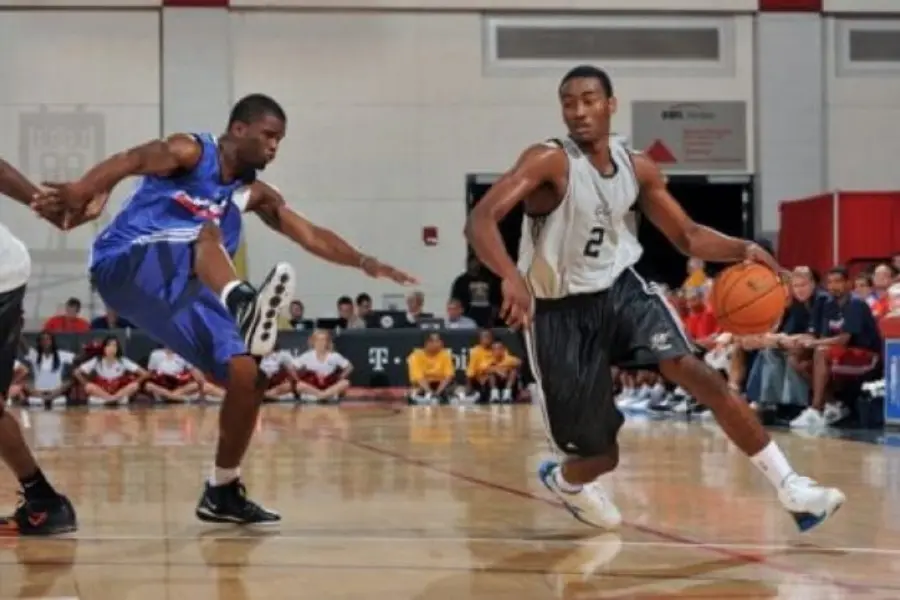
Conclusion
You’ve built a strong foundation in basketball fundamentals. With consistent practice, your ball-handling, shooting, and defensive skills will improve, along with your game awareness.
Stay committed, learn from mistakes, and focus on refining your technique. Master dribbling, shooting, and positioning while developing strategic thinking. As your skills grow, you’ll gain confidence, contribute to your team, and fully enjoy the game. Keep practicing, stay disciplined, and success will follow.
